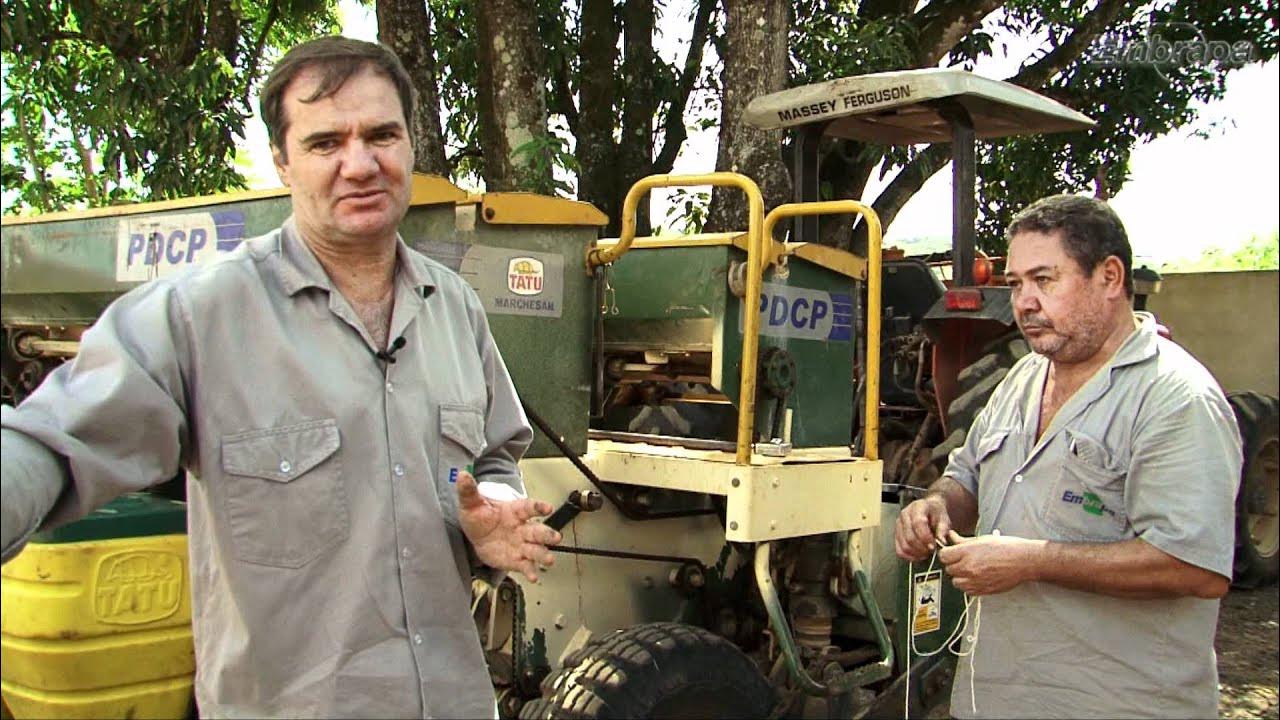KELEBIHAN DAN KEKURANGAN DUA SISTEM TANAM JAGUNG. PETANI HARUS TAU..
Summary
TLDRIn this video, an Indonesian farmer compares two popular methods of planting corn: the one-seed per hole system and the two-seed per hole system. He discusses the advantages and drawbacks of each method, including plant growth, cob size, and fertilization requirements. The one-seed method tends to produce stronger plants with larger cobs, but leaves gaps if seeds don’t germinate. The two-seed method can increase plant density but often results in smaller plants and less uniform growth. The video offers valuable insights for farmers to choose the most suitable planting method based on local conditions.
Takeaways
- 😀 Different corn planting methods are used in various regions of Indonesia, such as 1 hole with 1 seed and 1 hole with 2 seeds.
- 😀 The spacing for planting varies based on the method: 20 cm by 70 cm for 1 seed per hole, and 70 cm by 70 cm for 2 seeds per hole.
- 😀 Despite differences in planting methods, the population density of plants is often similar across methods.
- 😀 Plants with 1 seed per hole generally produce stronger, thicker stalks, which can lead to larger ears of corn.
- 😀 Using 2 seeds per hole can sometimes result in weaker stalks, though the overall plant count may still be high.
- 😀 The size of the stalk and the ear of corn is typically larger when only 1 seed is planted per hole.
- 😀 With 1 seed per hole, the growth of the plants is more uniform, as there’s only one plant to grow per spot.
- 😀 Planting 2 seeds per hole might result in uneven growth if one seed fails to germinate, leading to gaps in the field.
- 😀 Fertilization is simpler and faster when using 2 seeds per hole since fewer plants need to be managed, while 1 seed per hole requires more frequent applications.
- 😀 The larger stalks and uniform growth of 1 seed per hole often result in better overall plant performance during harvesting.
Q & A
What are the two corn planting systems discussed in the video?
-The two corn planting systems discussed are the 1 hole, 1 seed method and the 1 hole, 2 seed method.
What is the typical planting distance for the 1 hole, 1 seed method?
-The typical planting distance for the 1 hole, 1 seed method is 20x70 cm, with a planting space of 20 cm between plants and 70 cm between rows.
How does the 1 hole, 2 seed method differ in planting distance?
-The 1 hole, 2 seed method typically uses a planting distance of around 70x70 cm, meaning plants are spaced 70 cm apart in both directions.
What are the main benefits of the 1 hole, 1 seed system?
-The 1 hole, 1 seed system tends to produce stronger plants with larger stalks and ears of corn, as each plant has more space and resources. It also offers more uniform growth and easier fertilization.
What are the advantages of the 1 hole, 2 seed system?
-The 1 hole, 2 seed system is more resilient in terms of seed germination, as one seed will often grow even if the other fails. This system can also result in higher overall yields if managed properly.
How does plant size compare between the two planting systems?
-Plants grown using the 1 hole, 1 seed method tend to have thicker stalks and larger ears, while plants grown using the 1 hole, 2 seed method may have smaller individual stalks due to overcrowding but might lead to higher yields.
What impact does the 1 hole, 2 seed system have on plant growth uniformity?
-The 1 hole, 2 seed system can lead to less uniform growth due to overcrowding, as some plants may struggle for space, while the 1 hole, 1 seed system tends to result in more even growth.
How does fertilization differ between the two methods?
-Fertilization tends to be easier and less frequent in the 1 hole, 1 seed system, as there are fewer plants to manage. In contrast, the 1 hole, 2 seed system may require more frequent fertilization due to the higher number of plants.
Why does the 1 hole, 1 seed method result in more consistent growth?
-The 1 hole, 1 seed method allows for better control over growth, as each plant has enough space to thrive, and any non-germinating seeds can be quickly replaced with new ones.
What might be a disadvantage of the 1 hole, 1 seed system?
-A potential disadvantage of the 1 hole, 1 seed system is that if a seed fails to germinate, the plant spacing can appear too sparse or uneven, making it necessary to replace the missing plants.
Outlines

このセクションは有料ユーザー限定です。 アクセスするには、アップグレードをお願いします。
今すぐアップグレードMindmap

このセクションは有料ユーザー限定です。 アクセスするには、アップグレードをお願いします。
今すぐアップグレードKeywords

このセクションは有料ユーザー限定です。 アクセスするには、アップグレードをお願いします。
今すぐアップグレードHighlights

このセクションは有料ユーザー限定です。 アクセスするには、アップグレードをお願いします。
今すぐアップグレードTranscripts

このセクションは有料ユーザー限定です。 アクセスするには、アップグレードをお願いします。
今すぐアップグレード関連動画をさらに表示

CARA MENANAM LABU KUNING DAN JARAK TANAM YANG BENAR

Cara Tanam Jagung ( Guna Alat Menanam - Seeder )

Mecanização Agrícola - Parte II

Saking Maju dan Canggihnya Pertanian di Jepang! Begini Cara Petani Mereka Menghasilkan Padi Terbaik

Bagian Biji dan Proses Perkecambahan Biji (Epigeal & Hipogeal)

CARA MENANAM JAGUNG : DARI AWAL HINGGA PANEN JAGUNG. PANEN JAGUNG PAKAN CAPAI 7,1 TON PER HEKTARE
5.0 / 5 (0 votes)
